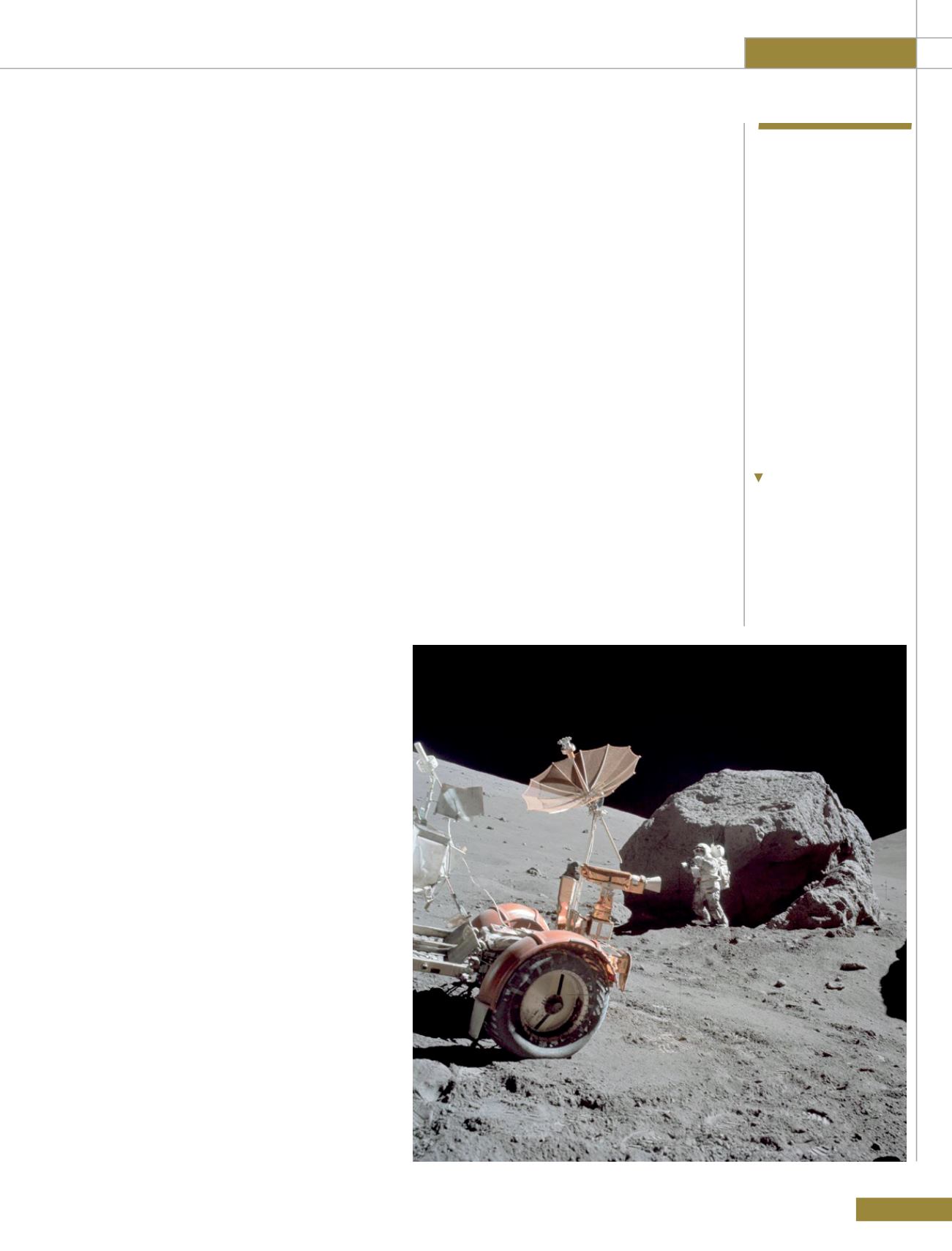
ROOM
91
Opinion
envoys of almost all humankind. And all speak
fervently of peace.
On 16 July 1969 a Saturn V rocket lifted off on
a historic voyage and four days later millions of
people watched as the first human footprints
were set on the Moon’s desolate surface and a flag
was planted. Though no claim of sovereignty was
made, the familiar stars and stripes is prominent in
many iconic photos of the first lunar landing and
the five that followed.
If any fragments of the flags have survived the
harsh lunar environment, they are most likely by
now bleached of all colour and a ghostly reminder
of an achievement that belongs to all humanity.
In contrast so much else from those first landings
will be very well-preserved. Without wind, water
or weather to erode the soil, equipment, including
cameras and even urine bags, the medals, the olive
branch, the disc and footprints are likely to remain
close to their original state. Imagine if these first
off-world footprints, preserved until now by the
vacuum of space, were erased?
Each of the six crewed lunar landings to date
- all part of NASA’s Apollo programme - was
fraught with its own dramatic missteps and
failures, each representing a litany of firsts and
each reverberating with demonstrations of human
perseverance, ingenuity and accomplishment.
In 1972, Apollo 17 was the final mission and
remains the last time humans travelled beyond
low Earth orbit (LEO). But that will soon change
because it is clear that we stand on the threshold
of the spacefaring age and that our Moon is about
to get very crowded.
Japan, China, Russia and the United States all are
weighing manned Moon missions within the next
decade. Private manned missions may get there
even sooner and more robots will be deployed to
the Moon by nations and private interests from as
early as next year.
It is not difficult to imagine the damage an
autonomous vehicle or an errant astronaut -
an explorer, colonist or tourist - could do to
one of the Apollo lunar landing sites, whether
intentionally or unintentionally.
In 2013, two well-meaning but woefully
misinformed legislators from the United States
sought to have the US Department of Interior
administer the Apollo lunar landing sites as US
National Historic Parks. The resulting Apollo Lunar
Landing Legacy Act of 2013 was ill-conceived and
in violation of United States Treaty obligations and
this attempt to bring the landing sites under the
purview of the United States was roundly, soundly
and rightfully criticised.
First, as George Robinson, retired Associate General
Counsel for the Smithsonian Institution pointed out,
the Act implied that only the United States should be
recognised for the Apollo programme, and yet “many
countries offered and provided critical components
of the programme, from alternate emergency
landing sites, to unique technology and personnel
with equally as unique specialty capabilities, to
tracking stations and on and on.””. And second, it
also implied that the United States has the ability
to make sovereign proclamations in respect of the
Moon which is categorically incorrect and a violation
of international law and the Outer Space Treaty by
which the United States is bound.
Article II of the Treaty states that “outer space,
including the Moon and other celestial bodies,
is not subject to national appropriation by claim
of sovereignty, by means of use or occupation
or by any other means.” It is a principal so
embedded in the bedrock of space exploration as
to be considered by many to be not just a treaty
obligation but customary international law.
With this in mind, For All Moonkind, Inc - a
non-profit organisation seeking to preserve the
memory of all those who toiled during the intense
competition of a Cold War that saw humankind
leap into space - believes it is not the United States,
It is not difficult
to imagine the
damage an
autonomous
vehicle or
an errant
astronaut could
do to one of the
Apollo lunar
landing sites
Astronaut Harrison
Schmitt, a geologist and
the first person initially
trained as a scientist to
walk on the Moon,
photographed on 13
December 1972 during the
third Apollo 17 EVA at the
Taurus-Littrow landing
site.


